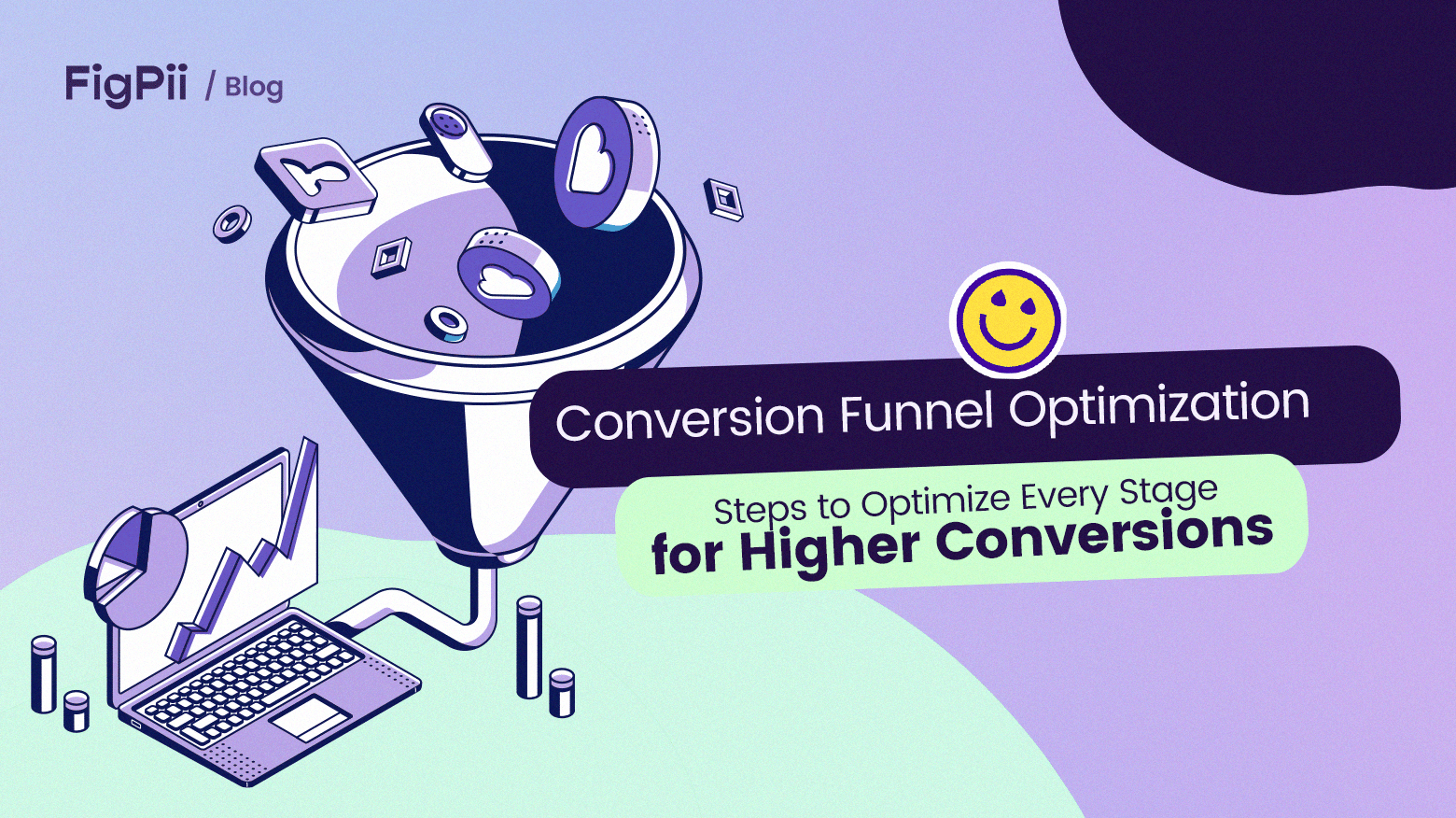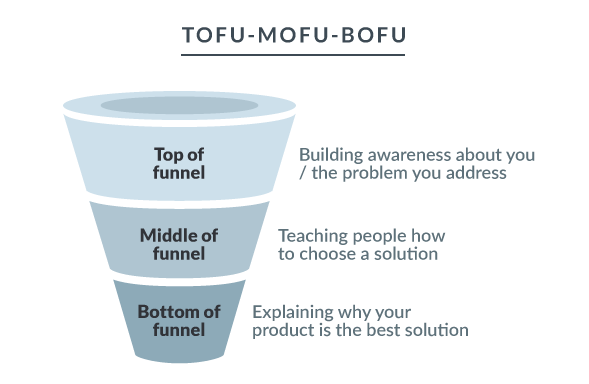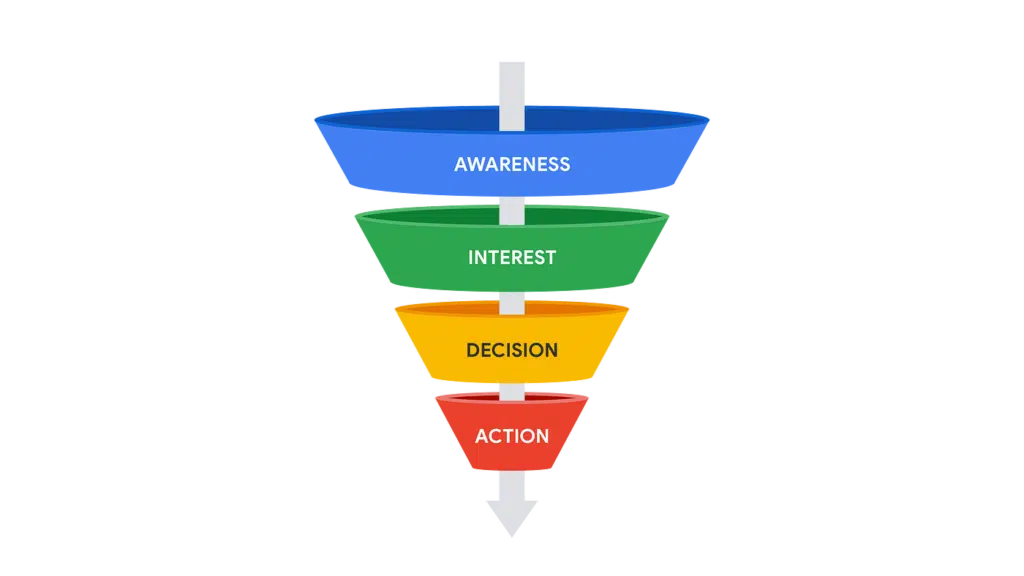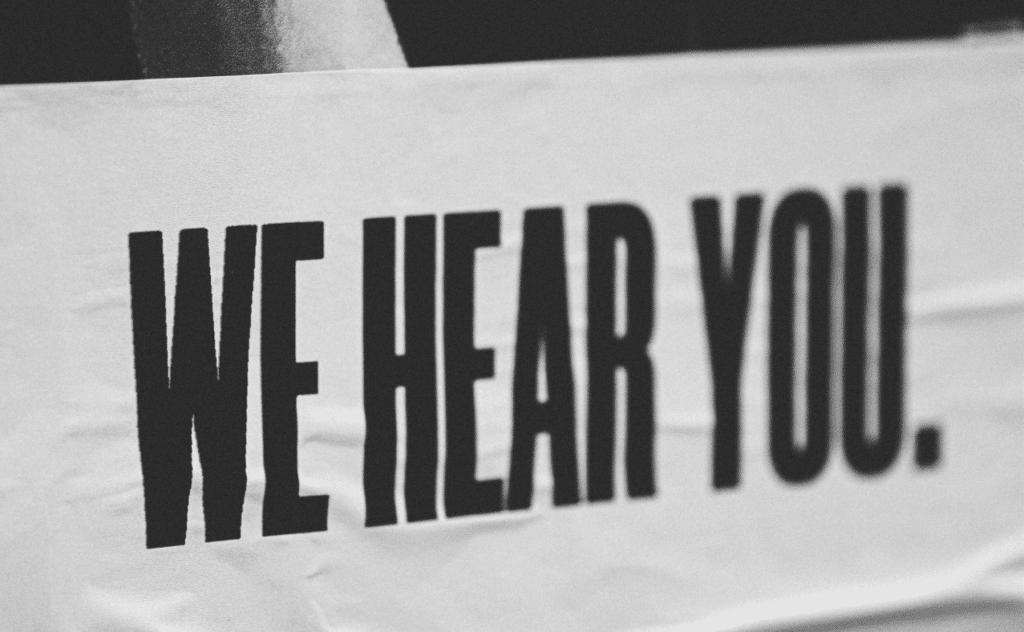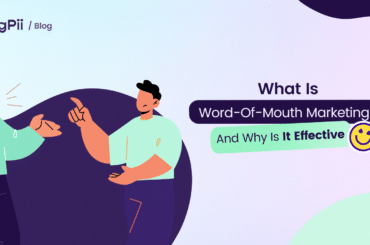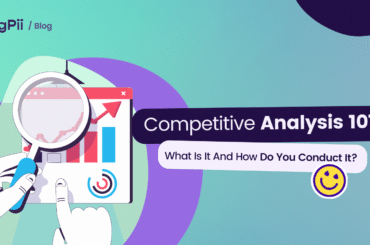Before getting into what conversion funnel optimization is, it’s important to understand what a conversion funnel is.
A Conversion Funnel, also known as a sales funnel, is a strategic framework that maps out potential customers’ journey before taking a desired action, such as making a purchase.
It represents the stages a buyer progresses through, gradually narrowing down the number of potential customers as they move closer to conversion.
Throughout the conversion funnel, businesses guide and influence potential customers, just like a salesperson, nurturing them with relevant information, addressing their concerns, and building trust.
In this article, we’ll discuss conversion funnels and how you can optimize the different stages of the conversion funnel to increase conversion.
Conversion Funnel Models
Various conversion funnel models are used in marketing and sales strategies. The Traditional Conversion Funnel Model, often used in inbound and content marketing strategies, divides the funnel stages into three parts.
-
Top of the Funnel
This is the awareness stage, where potential customers come in contact with your product or brand. At this stage, customers could also be aware of a problem they need a product or service to solve. The Top of the funnel is also the widest part of the funnel stage, where marketers and brands aim to attract as many potential customers as possible.
-
Middle of the Funnel
In this consideration stage, potential customers are interested in evaluating different solutions or options. They can subscribe to your newsletter, check out your brand’s socials, and compare your products to your competitors’.
-
Bottom of the Funnel
This is the decision stage, where potential customers are ready to purchase or take the desired action. This is the most narrow part of the funnel since many of your potential customers might have changed their minds at the other conversion stages.
The AIDA Model
The AIDA model is a classic marketing framework that stands for Attention, Interest, Desire, and Action. It outlines the four key stages a customer typically goes through when purchasing.
Imagine you’re planning a road trip with your friends. You have a destination in mind and must navigate through different stages to reach that final spot. Well, consider a conversion funnel a road trip for your customers.
Now, let’s break down the conversion funnel into its stages using our road trip analogy:
Conversion Funnel Optimization at the Different Stages Of The AIDA Model
Awareness Stage (The Road Sign)
In the beginning, your potential customers become aware of your existence, just like seeing a road sign indicating an exciting destination.
This could happen through various channels like advertisements, websites, social media, or word-of-mouth.
This stage is crucial as it introduces your brand and offerings to potential customers, creating initial interest and generating traffic to your business.
Optimizing The Awareness Stage for Conversion
The awareness stage is one of the most important stages in the conversion funnel because it accounts for your potential customer’s first impression of your brand. So, how do you optimize the awareness stage for conversion?
-
Define Your Target Audience
Just like planning a road trip with specific destinations in mind, identify your ideal customers and understand their preferences, interests, and pain points.
Defining your targeting ensures that your marketing efforts reach the right people most likely to be interested in your offer.
-
Create Compelling Messaging
Imagine your marketing messages as road signs along the journey. Create clear, concise, compelling messages that resonate with your target audience.
Highlight your product or service’s unique value and benefits, and communicate how it solves their problems or fulfills their needs.
-
Produce Relevant Content
Like providing interesting sights and attractions along the road trip, create valuable content that educates, entertains, or inspires your target audience.
Use blog posts, videos, social media content, or podcasts to showcase your expertise and establish your brand as a trusted source of information in your industry.
-
Use Multiple Channels for better reach.
Like using different roads to reach your destination, leverage various marketing channels to maximize your reach.
This could include social media platforms, search engine optimization (SEO), paid advertising, email marketing, influencer partnerships, or even offline marketing initiatives if applicable to your business.
Interest Stage
Once they notice your sign, they become interested in what you have to offer. This is when they start looking for more information, similar to consulting a road map to plan their journey. They may explore your website, read reviews, or compare your offerings with competitors.
Here, they evaluate whether your product or service is the right fit for their needs. They may compare prices, features, and benefits and even seek recommendations from friends or experts.
It’s essential to capture and maintain the interest of potential customers during this stage as they gather information and evaluate your product or service alongside competitors.
Optimizing The Interest Stage for Conversion
Optimizing conversion at this stage involves providing valuable and relevant information, guiding potential customers toward making an informed decision, and addressing any concerns or objections they may have.
Let’s discuss some practical steps to optimize this conversion funnel stage.
-
Implement Lead Generation Strategies
Just as travelers stop at visitor centers to gather information, implement lead generation strategies to capture the interest of potential customers.
Offer gated content such as ebooks, whitepapers, or webinars, and request their contact information in exchange.
This allows you to nurture the relationship, provide relevant content, and guide them toward conversion.
-
Use Remarketing and Email Marketing
Similar to travelers receiving follow-up brochures or emails after visiting an attraction, leverage remarketing and email marketing to stay top-of-mind with potential customers.
Utilize tracking pixels or cookies to retarget interested visitors with personalized ads or content based on their previous interactions with your website.
Additionally, develop an email marketing strategy to nurture leads by sending targeted and relevant content, exclusive offers, or product updates to keep them engaged and interested.
-
Leverage Social Proof and Testimonials
Just as travelers often rely on recommendations from others, potential customers seek social proof to validate their decision-making.
Feature customer testimonials, reviews, case studies, or user-generated content that showcases positive experiences with your product or service.
This helps build credibility and trust, reducing potential customers’ hesitations and increasing their confidence in choosing your brand.
Desire Stage
At this stage, your potential customers have narrowed down their options and are ready to make a decision, just like choosing a pit stop for a quick break during the road trip.
They might add items to their shopping cart, request a quote, or take a trial of your product/service.
As a marketer, brand, or business owner, ensuring a seamless and persuasive experience during this stage can significantly impact your conversion rates.
Optimizing The Desire Stage for Conversion
What you want to do at this stage is maintain the momentum from the interest stage and persuade or convince your potential customers to take the final step toward conversion.
-
Create Irresistible Offers
Think of the Desire stage as the point where potential customers consider different routes and attractions. To optimize conversion, craft irresistible offers that make choosing your product or service even more enticing.
This could involve limited-time promotions, exclusive discounts, bundled packages, or additional value-adds. Ensure your offers align with the desires and needs of your target audience.
-
Use Persuasive Copywriting
Just as road trip enthusiasts rely on captivating travel descriptions to choose their destinations, use persuasive copywriting to highlight the unique value proposition of your brand.
Craft compelling headlines, engaging product descriptions, and persuasive landing page copy that appeals to the desires and aspirations of your potential customers.
-
Leverage Social Proof and FOMO
Similar to travelers fearing they might miss out on a popular tourist spot, use social proof and the fear of missing out (FOMO) to optimize conversions.
Display testimonials, case studies, or user-generated content that showcases the positive experiences and results others have had with your offering.
Incorporate scarcity tactics, such as limited quantities or time-limited offers, to create a sense of urgency and drive potential customers to take action.
-
Implement Retargeting Campaigns
Imagine road trip billboards reminding travelers about exciting attractions they passed by. Implement retargeting campaigns to reach potential customers who have shown interest but have yet to convert.
Using tracking pixels or cookies, you can display targeted ads to remind them of your offering, reinforce the desire they have previously shown, and encourage them to return and make a purchase.
Action Stage
Finally, the potential customers reach the last stage of the conversion funnel. This stage represents the ultimate goal of the conversion funnel.
They take the desired action and become paying customers, which is equivalent to successfully reaching the destination of your road trip.
Optimizing The Action Stage for Conversion
All your efforts should be directed towards making the conversion process seamless for your potential customers because, at this stage, they have most likely decided on patronizing your brand. Therefore the last thing you want to do is create any form of conversion friction.
-
Streamline the Conversion Process
Imagine the Action stage as the point where travelers are ready to book a hotel or buy tickets for an attraction.
Similarly, ensure that your conversion process is streamlined and user-friendly. Simplify your checkout or signup process, minimize form fields, and provide clear instructions for completing the desired action.
Make it easy for potential customers to convert by removing any unnecessary hurdles or complications.
-
Build Trust and Address Concerns
Just as travelers may have concerns about the safety or quality of an attraction, potential customers may have reservations before taking the final action.
Address their concerns by providing trust signals, such as security badges, testimonials, guarantees, or certifications.
Offer a clear return or refund policy to alleviate any doubts. Building trust and reducing friction will encourage potential customers to feel more confident in taking the desired action.
-
Offer Incentives or Urgency
Similar to offering discounts or limited-time offers at a tourist spot, provide incentives or create a sense of urgency to optimize conversions.
Offer exclusive discounts, freebies, or bonuses for taking action within a specific timeframe.
-
Provide Multiple Payment Options
Just as travelers appreciate having various payment options, offer multiple payment methods to accommodate different preferences.
Accept popular credit cards, digital wallets, or alternative payment methods to ensure potential customers can pay in the way they find most convenient.
When you remove barriers related to payment, you can minimize friction, reduce cart abandonment rate and optimize conversion.
Maintaining the Momentum Post-Conversion
Maintaining momentum post-conversion is crucial for fostering long-term customer retention and satisfaction and maximizing the value of each conversion.
It’s important to continue nurturing the customer relationship and providing ongoing support to drive repeat business and referrals.
Here are some strategies to help maintain momentum post-conversion
-
Provide Excellent Customer Service
Just as a road trip host ensures a pleasant experience for travelers, prioritize exceptional customer service.
Be responsive to customer inquiries, address concerns promptly, and go the extra mile to exceed their expectations.
A positive post-conversion experience enhances customer satisfaction and encourages them to remain engaged with your brand.
-
Implement a Customer Retention Strategy
Develop a customer retention strategy to keep customers engaged and loyal. This may involve personalized email campaigns, loyalty programs, exclusive offers, or special rewards for repeat purchases.
Continuously engage with customers, share relevant content, and demonstrate that you value their continued relationship.
You should also monitor post-conversion metrics, such as customer lifetime value and repeat purchase rates, to evaluate the effectiveness of retention strategies.
-
Gather and Act on Customer Feedback
Collect customer feedback post-conversion. Conduct surveys, monitor social media mentions, or offer opportunities for customers to share their experiences.
Use this feedback to identify areas for improvement and make necessary adjustments to enhance the customer journey.
-
Encourage and Leverage User-generated Content
Encourage customers to share their experiences with your product or service. Although, if your services are good, you will likely not have to persuade them to leave reviews, provide testimonials, or share their stories on social media.
Leverage user-generated content to showcase your brand’s real-life value and positive outcomes, which can influence prospective customers and drive additional conversions.
-
Foster a Sense of Community
Create a community around your brand where customers can connect and share their experiences.
This can be through social media groups, forums, or online communities.
You create an environment that encourages ongoing engagement and advocacy by fostering a sense of belonging and facilitating customer interaction.
-
Offer Upsells and Cross-sells
Offer relevant upsells or cross-sells to your existing customers. Identify complementary products or services that enhance their initial purchase and provide added value.
When you offer these options post-conversion, you can increase customer lifetime value and revenue.
Conversion Funnel Optimization Frequently Asked Questions
-
-
Why is conversion funnel optimization important?
Conversion funnel optimization is crucial for any business because it directly impacts profitability. When you optimize your conversion funnel, you’re essentially fine-tuning the path your customers take from discovering your product or service to making a purchase. This optimization can lead to higher conversion rates, increased sales, and improved return on investment (ROI). It ensures that you’re not just attracting visitors but turning them into paying customers.
-
What is the role of A/B Testing in Conversion Funnel Optimization?
A/B testing plays a pivotal role in conversion funnel optimization by enabling data-driven decision-making. It eliminates all the guesswork in the conversion optimization process.
You can gather both qualitative and quantitative data, which can be used to understand user behavior, pain points, and their level of satisfaction with the changes made during the conversion funnel optimization.
-
What are some key performance metrics to monitor for conversion funnel optimization?
Monitoring the right performance metrics is essential for gauging the effectiveness of your conversion funnel. Some key metrics to keep a close eye on include:
- Conversion Rate: This is the percentage of users who complete a desired action, such as making a purchase, compared to the total number of users who entered the funnel.
- Bounce Rate: It measures the percentage of users who leave your site after viewing only one page. A high bounce rate could indicate problems in the initial stages of the funnel.
- Average Order Value (AOV): AOV tells you the average amount spent by a customer in a single transaction. It’s essential for understanding your funnel’s revenue potential.
- Cart Abandonment Rate: If your funnel involves e-commerce, tracking how many users add items to their cart but don’t complete the purchase is vital. Reducing this rate can significantly impact revenue.
-
Over To You
Understanding conversion funnels helps businesses optimize each stage, ensuring a smooth journey for their customers from awareness to conversion.
Each stage builds upon the previous one, guiding potential customers through a logical progression toward conversion. Therefore, optimizing each conversion funnel stage is essential for driving higher conversions.

